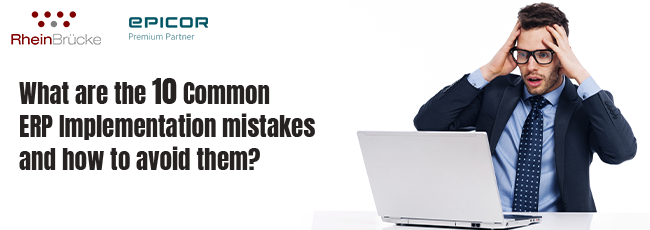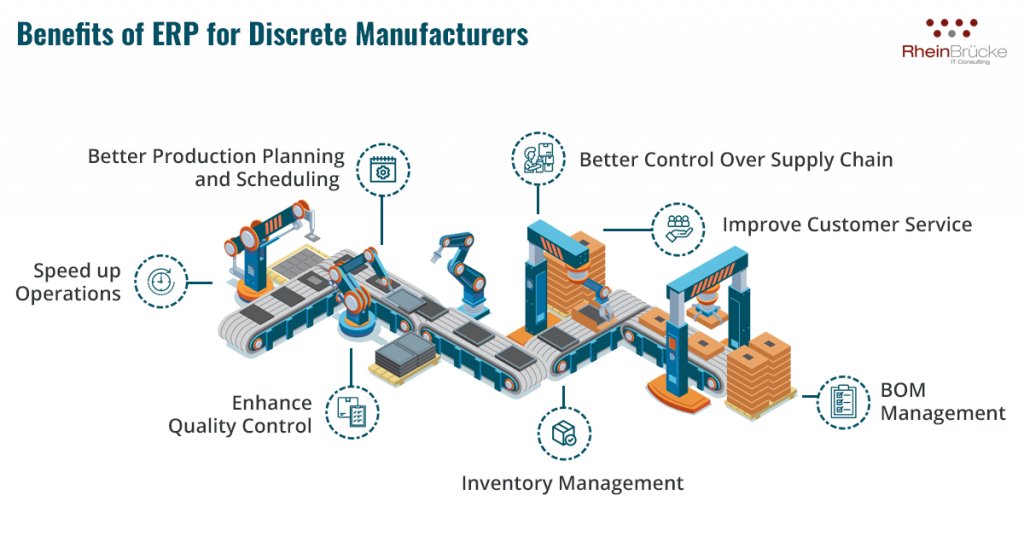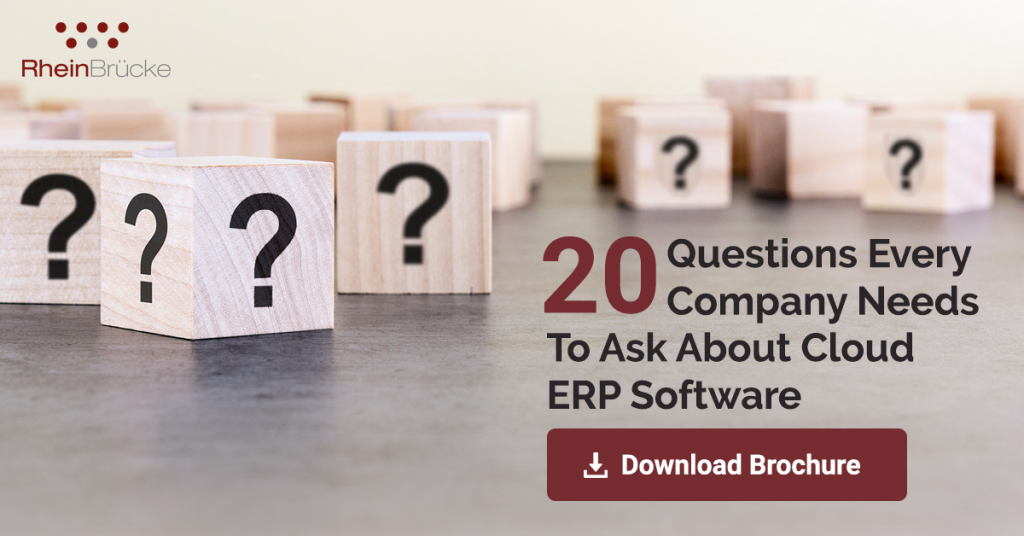
What are the top 10 ERP Implementation mistakes and how to avoid them?
Implementing an ERP system is a significant endeavour that can usher in a much-needed transformation in your organization. It is a system that can manage and improve every facet of your business, starting from material requirements to financing, manufacturing, warehousing, and delivery of the product. However, while ERP provides several benefits, success is only achievable if the implementation is carried out properly. According to research reports and statistics, around 50% of ERP implementations fail the first time. Here are a few well-known ERP implementation project failure examples that tell us about what may go wrong when an ERP implementation goes awry.
Hershey Foods’ spent $112 million and 30 months on their ERP project. After go-live, they started experiencing problems. They were not able to execute an estimated $100 million worth of orders, despite having that product in their inventory and Hershey’s stock dropped an astonishing 8%. Another famous example of ERP failure is that of Nike which lost $100 million+ in revenue, had to deal with countless lawsuits and a 20% drop in its stock, post their ERP implementation to upgrade their supply chain system costing them around $400 million.

A poor implementation might necessitate months of troubleshooting and retracing before you begin to see a return on investment. Thus, adopting the correct ERP implementation approach or technique is likely to be the second most critical step you need to take, after selecting an ERP system. So, to develop an approach conducive to an effective ERP implementation, it is crucial to understand the most typical ERP implementation mistakes and how they can be avoided. Here is a list of the 10 most common ERP implementation mistakes and ways to avoid them.
1. Insufficient Planning of ERP implementation

One of the most common errors organizations make when implementing an ERP is establishing high-level plans using incorrect assumptions or inaccurate resource estimations. Unwanted expenditures result from the unclear scope and lack of planning. For example, a poll by Panorama reported that 63% of implementations exceeded budget, and on average, implementations took roughly four months longer than anticipated. Solution: The first step towards ERP implementation success is to design a clear implementation strategy by doing extensive planning. Plan why, how, when and where you want to implement ERP and simplify your operations based on your specific requirements. Interviewing stakeholders to understand requirements, agreeing on what functionalities are must-have and what are nice to have, having a kick-off meeting, finalizing on Work Breakdown Structure (WBS), etc. will help. Furthermore, the project team should also define risk management strategies or develop a contingency plan to address potential risks or a crisis. Even simple things like vacations and holidays, if ignored can derail a project plan do to resource availability conflicts.
2. Failure in Understanding or Utilizing the Key Features
According to a study, just 46% of respondents said they had a clear awareness of the ERP system features they were utilizing. Companies that do not understand features in their ERP system miss out on possibilities on business process automation, fulfilling business requirements and accomplishing objectives.
Solution: You can construct a master list with all ERP features, measure their usage, and review the list regularly to see which features are most useful. This knowledge library may then be utilized for training new employees, creating test scripts, supporting audits and reporting new requirements. A structured training program will ensure that all users know what they are going to do using the new ERP system.
3. Excessive-Customization
According to an ERP survey report, 93% of businesses customized their ERP software based on their intended purpose. However, believing in “The more the number of features, the better the ERP performance” is a myth. Many businesses get enticed to embrace a variety of features without examining the requirement of such functionalities for them. This can lead to over-customization and can further raise the complexity of an ERP system causing implementation failures.
Solution: Since many times the demand is met by purchasing an ERP system and no modification is required, businesses must comprehend the difference between ERP package setup and customization. This isn’t to argue that customization should be avoided completely; rather, we advocate keeping it to a minimum. Evaluating industry vertical ERP solutions that come with out-of-the-box features to fit specific industry needs and best practices can help minimize customizations.
4. Change Management Failures
Employees in any organization are comfortable to work the way they have been used to and may not recognize the need for a change. Any change might not get easily accepted, especially when it comes to an ERP. ERP projects usually introduce massive changes. But, many companies forget to focus on the impact it brings to employees related to their tasks or job roles. Several companies that overlook change management end up not being able to realize the full potential of their ERP system. Because, despite the several benefits the ERP implementation offers, your company can only reap its benefits if employees are making the most out of it. This is where Change Management becomes critical.
Also, due to changes in business requirements, ERP system implementations often undergoe modification post implementation. However, uncontrolled or poorly managed changes may lead to chaotic systems and low-quality data that is difficult to use and maintain.
Solution: Having a well-definedchange management strategy that includes effective stakeholder management, effective communication management, end-user training, etc and working as a team can help to ensure buy-in from stakeholders, facilitate user adoption and expedite investment ROI. Aligning on corporate strategy and project strategy during project initiation phase itself, following the change management plan correctly, and keeping everyone focused on the ultimate objective helps to guarantee that your ERP implementation is successful. Performing a change impact analysis in case of any changes will also help foresee the outcomes as well as risks and manage changes better.
5. Boundless Expectations for an ERP implementation
ERP is a software solution that will transform your organization but having unreasonable expectations from an ERP may be a big risk that leads to failure. Moreover, it’s quite normal that organizations may get taken aback by ERPs’ market dominance, but it is critical to assess your company’s requirements and how much more resource allocation is affordable.
Solution: According to a survey, reasonable ERP implementation expectations were considered as the most crucial criteria for preventing failure by 25% of respondents. So, don’t expect ERP to solve all your problems in one fell swoop once it’s installed; instead, plan ahead of time for future needs and requirements.
6. Ignoring the Benefits and Drawbacks of On-premise vs. Cloud
The choice of On-premise vs Cloud is one of the most important decisions when implementing an ERP solution. The decision has to be made based on different components such as security, storage, compliance, infrastructure, customizations, etc. Although Cloud ERPs offer an exhaustive list of advantages, in case any complex customizations are needed for your business, going with a Cloud deployment can be a big mistake. Moreover, using Cloud ERP software depends on having constant connectivity to reliable internet.
Solution: Each deployment type has its advantages and disadvantages that should be considered before proceeding with the implementation of an ERP system. Much depends on your company structure, individual business needs, and the type and architecture of the ERP system itself.
7. Overlooking the Relevance of Reliable Data
Data accuracy is critical for effective ERP implementation and business growth. Ignoring it will result in inaccuracies. So, it is important to ensure that the ERP is configured with precise data, which will reduce the likelihood of errors and guarantee that required processes are in place. The correctness of your company’s information is determined by how you start with your data.
Solution: Before uploading data to your ERP system, make sure you double-check it. Do examine your data for any errors, duplicates or missing data. Better understanding on extracting, transforming and delivering data will save you on re-starting system expenditures as well as the loss of some crucial data.
8. Missing Out on Load Testing

Since testing processes do very little to prepare your ERP to take the entire thrust of the company, it’s never enough to only run functional tests!
Another study by Panorama revealed that 40% of ERP implementations suffer significant operational interruptions after going live. Thus, passing your ERP through basic testing does not indicate it’ll operate similarly in real-world situations where heavy usage is required.
Solution: Before you go live, test the ERP by replicating the system’s maximum real-world demand. Load testing can help you uncover potential performance issues and solve them in advance.
9. No Investment in ERP Implementation team
A new ERP implementation isn’t like any other IT project. While your IT staff may have had experience with installation in the past, they may not be experts or have the resources to execute an ERP system project along with their other IT initiatives.
Solution: Consider bringing in a professional team for implementation. A team that can understand your company’s demands and can manage the full implementation process is most likely to create a difference between a successful roll-out and a disaster.
10. Neglecting Maintenance
Work does not cease after your ERP goes live! As technology evolves, so does the requirement to update it. To stay abreast with the latest trends and continue to profit from the ERP, the business must have a preventative maintenance policy in place.
Solution: A comprehensive maintenance strategy is vital in ERP implementation planning. It determines maintenance schedules, can control small glitches and ensure on-time software upgrades.
Conclusion – ERP Implementation
ERP system implementation is one of the most critical undertakings you can embark on for your organization. ERP implementation best practices improve customer experience, increase sales, streamline production operations, and save resources, expenditures, and time.
Several organizations make mistakes prior, during and after ERP implementation, resulting in decreased efficiency and productivity. Avoiding these typical blunders can help you achieve your business objectives and eventually, expand your organization.
So, are you prepared to begin your ERP implementation without making any mistakes? In case you need any help, do not hesitate to get in touch with us!





